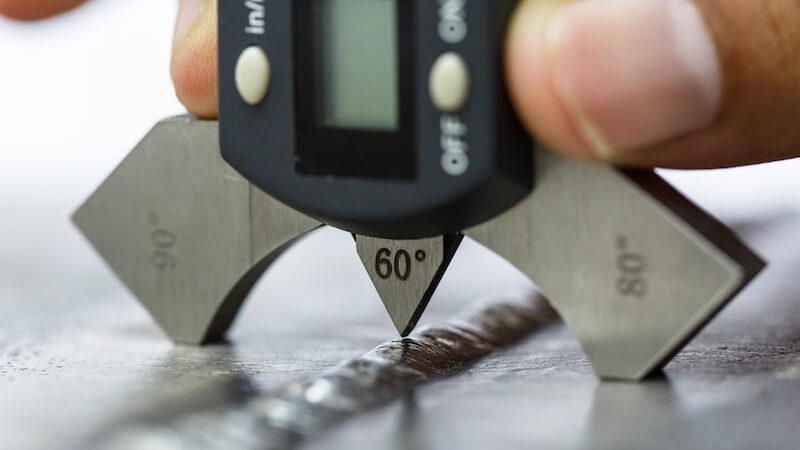
Discovering the Different Approaches and Criteria of Welding Assessment for Achieving Conformity and Dependability in Engineering Applications
The value of welding inspection in engineering applications can not be overemphasized, as it functions as a crucial safeguard for making certain architectural integrity and conformity with market standards. Numerous techniques, consisting of aesthetic evaluation and advanced non-destructive screening strategies, provide important understandings into the quality of welds. Adherence to recognized regulatory requirements such as those from AWS and ASME develops a framework for liability and excellence. However, the landscape of welding inspection is constantly evolving, motivating a better assessment of emerging methods and their effects for design integrity. What might these growths require for future tasks?
Value of Welding Assessment
Welding examination plays a crucial role in ensuring the integrity and safety of bonded structures. The significance of welding inspection can not be overstated, as it offers as a guard against potential failings that could result from inadequate welding methods.
Furthermore, welding evaluation is necessary for keeping quality control throughout the welding process. It ensures that the welds fulfill the needed mechanical and physical homes needed for their intended applications. Normal assessments also cultivate a culture of accountability and continual enhancement within welding operations, motivating adherence to best methods and industry standards.
In managed sectors such as aerospace, building and construction, and production, rigid welding inspection procedures are mandated to follow legal and safety demands. Eventually, reliable welding assessment not only safeguards human life and residential property yet also boosts the longevity and reliability of welded structures, making it a crucial aspect of engineering and building.

Usual Welding Examination Approaches
A variety of evaluation approaches are used to assess the quality and stability of welds, each tailored to discover particular sorts of defects. Amongst one of the most typical methods is visual inspection, which involves a thorough examination of the weld surface area to recognize visible flaws such as splits, damages, and insufficient fusion. This method is frequently the primary step in the inspection process as a result of its simpleness and cost-effectiveness.
Another extensively utilized method is radiographic examination, where X-rays or gamma rays permeate the weld to disclose interior defects. This strategy is especially reliable for finding porosity and inclusions within the weld product. Ultrasonic testing uses high-frequency sound waves to recognize internal imperfections, offering a thorough analysis of the weld's honesty.
Additionally, magnetic particle examination is made use of for ferromagnetic materials, permitting the discovery of surface and near-surface flaws by observing and using magnetic fields bit patterns. Last but not least, dye penetrant testing entails using a liquid dye to the weld surface area, disclosing cracks and other gaps upon inspection. Each of these methods plays a vital role in making sure weld top quality and compliance with market criteria
Non-Destructive Checking Techniques
Non-destructive screening (NDT) methods are vital tools in the assessment of weld high quality, allowing examiners to assess the integrity of bonded joints without triggering damage to the products. Different NDT methods are used to recognize possible problems, ensuring that welds fulfill the needed criteria for safety and security and efficiency.
One of one of the most common strategies is ultrasonic testing (UT), which uses high-frequency acoustic waves to find internal defects such as fractures or spaces. Radiographic testing (RT) utilizes X-rays or gamma rays to produce photos of welds, exposing any type of stoppages within the product. Magnetic bit screening (MT) is efficient for discovering surface and near-surface defects in ferromagnetic products with the application of electromagnetic fields and contrasting fragments.
Fluid penetrant screening (PT) is another extensively used method that includes applying a dye to the surface area of the weld, which seeps right into any type of cracks, making them noticeable under ultraviolet light. Each of these techniques provides one-of-a-kind advantages and limitations, and the option of a proper technique is crucial to attaining precise analyses of weld stability. Ultimately, the execution of NDT techniques significantly adds to the dependability and safety of design applications.

Governing Criteria and Conformity
In the world of welding assessment, adherence to regulatory requirements and conformity is paramount to make certain the security and integrity of welded frameworks (Welding Inspection Milwaukee). Various organizations, including the American Welding Society her response (AWS), the American Society of Mechanical Designers (ASME), and the International Organization for Standardization (ISO), have developed guidelines that control welding methods and assessment procedures. These requirements offer a structure for quality control, detailing the necessary credentials for inspectors and the methods for evaluating weld integrity
Compliance with look at this site these governing requirements not just improves the architectural stability of bonded assemblies yet likewise reduces threats related to failures, which can have disastrous repercussions. Examinations need to be executed making use of specified procedures, including visual, ultrasonic, and radiographic methods, to ensure that welds satisfy defined criteria.
Additionally, adherence to these standards is often called for by legislation, especially in industries such as manufacturing, aerospace, and building and construction. Routine audits and accreditations are vital to maintain compliance, therefore cultivating a culture of security and quality within organizations. Ultimately, regulatory standards and compliance serve as the backbone of dependable welding examination techniques, guaranteeing that crafted frameworks meet both performance expectations and safety requirements.
Best Practices for Welding Evaluation
While preserving conformity with regulative requirements is essential, carrying out finest practices for welding assessment additionally boosts the security and integrity of bonded frameworks. Efficient welding examination begins with extensive preparation, which consists of understanding the details needs of each task and making sure examiners are trained in appropriate methods and criteria.
Utilizing a thorough assessment list assists to make sure all essential elements are evaluated, such as weld size, infiltration, and visual flaws. Non-destructive testing (NDT) techniques, such as radiographic or ultrasonic screening, need to be used where appropriate, providing a more extensive examination of weld high quality without endangering the stability of the materials.
Documentation plays a significant role in ideal practices; preserving precise records of evaluations, including photographs, test results, and conformity records, makes sure liability and assists in future analyses. Furthermore, promoting a culture of open communication between inspectors and welders can result in early identification of potential issues, advertising prompt rehabilitative activities.
Conclusion
In summary, the implementation of rigorous welding evaluation techniques and adherence to established standards are necessary for ensuring compliance and reliability in engineering applications - Welding Inspection Milwaukee. Strategies such as visual assessment, radiographic screening, and ultrasonic screening serve as you could try this out essential devices in recognizing problems and preserving top quality assurance. By promoting a culture of responsibility and excellence, organizations can improve the honesty and longevity of welded structures, eventually adding to the safety and security and efficacy of design projects
Different approaches, consisting of visual evaluation and advanced non-destructive testing strategies, provide vital understandings right into the top quality of welds.Welding assessment plays a vital duty in guaranteeing the honesty and safety and security of bonded frameworks.A selection of evaluation approaches are used to evaluate the top quality and integrity of welds, each tailored to find specific types of flaws.One more widely made use of technique is radiographic evaluation, where X-rays or gamma rays pass through the weld to disclose internal problems.In the realm of welding assessment, adherence to governing standards and compliance is critical to make sure the safety and security and reliability of welded structures.